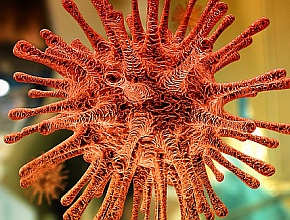Surgery vs conservative care for persistent sciatica
Sciatica is a common and potentially debilitating disease that is manifest by sharp burning pain along the posterolateral aspect of the buttocks and thigh. It is typically caused by herniation of a lumbar disk and irritation of 1 of 5 spinal nerves that join to form the sciatic nerve.
In patients with acute symptoms, typically lasting <3 months, conservative treatment that includes physiotherapy is as effective as surgical management. In patients with symptoms lasting >3 months, it is uncertain if conservative treatment is as effective as surgical management.
In this single-center randomized trial patients with sciatica who had symptoms lasting 4 to 12 months and had posterolateral lumbar disk herniation at the L4 to L5 or L5 to S1 level, as detected by magnetic resonance imaging (MRI), were randomly allocated to receive 6 months of standard nonsurgical management or microdiskectomy done by spine surgeons.
The primary study outcome was the intensity of leg pain at 6 months after enrollment measured by a visual analog scale ranging from 0 (lowest pain intensity) to 10 (highest pain intensity). Secondary outcomes included quality-of-life measures at 1.5, 3, 6, and 12 months.
Of 790 patients screened, 128 were enrolled into the trial (64 in each group), with a mean age of 38 years and 59% of male participants. At baseline, the mean (SD) score for leg-pain intensity was 7.7 (2.0) in the surgical group and 8.0 (1.8) in the nonsurgical group. In the surgical group, 56 patients underwent the procedure a median of 3.1 weeks after enrollment. The leg-pain intensity score at 6 months was 2.8 (0.4) in the surgical group and 5.2 (0.4) in the nonsurgical group (adjusted mean difference, 2.4; 95% CI, 1.4-3.4; P < .001). Quality-of-life scores favored surgical management at 6 and 12 months. In the surgery group, 2 patients developed recurrent disk herniation and 1 patient developed recurrent neuropathic pain. A limitation of this study was that data for the primary outcome were not available in ~20% of patients in the surgical and nonsurgical groups.
This study suggests that in young patients with sciatica who have prolonged symptoms lasting >4 months and have not responded to conservative management surgical treatment is effective to alleviate symptoms and improve quality of life.
 English
English
 Español
Español
 українська
українська







